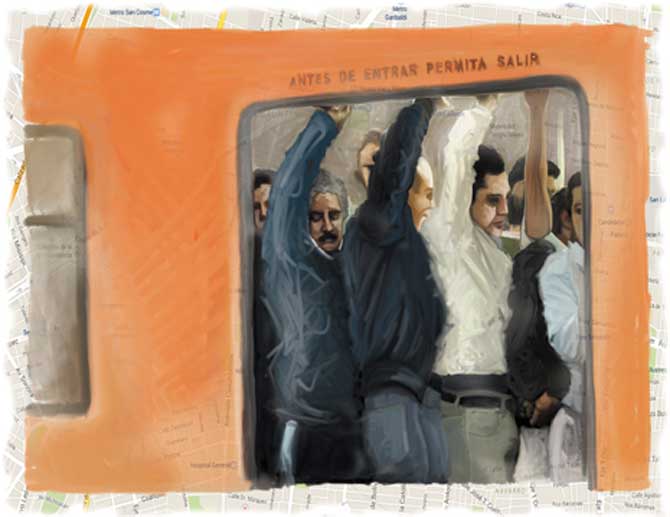
Uploaded on 2017-02-27 by MBA BArch Marcos H Narvaez Silva
Image source: http://www.nexos.com.mx/wp-content/uploads/2015/01/03-transportarse-02.jpg From my perspective, the main stocks and flows in Mexico City are water, people, energy and density, being the water the most important stock and flow to attend in the long term. The analysis of the city points the density of population as the source of most of the problematic of Mexico City, however since the Government have implemented measures to reduce the population, in recent years there is an increasing stock and flow of density to Querétaro, which is 3 hours distance by bus. It is worth mentioning that many inhabitants of Mexico City are migrating to Queretaro, since it offers a better quality of life in general terms. In despite of the fact that there are a large number of issues that require attention in Mexico City, I will focus my attention on the previous mentioned stocks and flows: 1. Mexico City is very stressed in terms of water supply, 16 m3 per second are pumped into the city from Cutzamala and Lerma (which are in a considerable distance from Mexico City) and 59.8 m3 per second are extracted from the subsoil of the city (source: http://www.agua.org.mx/el-agua/agua-en-mexico). However, nearly 50% of the water supply is lost due to the leaks in the system. The Government has implemented measures to reduce the demand of water by increasing consciousness in the collective culture towards its use. However, it’s clear that Mexico City requires a urban surgery in terms of water stocks and flows. One of my proposals for a master’s degree was to regenerate the urban area of Xochimilco, as a huge stock of water for the city, with potential for sustainable tourism. Secondly, it is necessary to think of increasing ponds and water features as stock of water for the city. As well as changing the asphalt of streets and sidewalks for ecological concrete (source: http: //www.concretoecologico.com.mx/), with the purpose of increasing rainwater harvesting and reducing dependence on Lerma and Cutzamala systems. Finally, it’s evident the necesity to repair (and potentially reconstruct in some areas) the water supply system in order to avoid losses derived from leaking. 2. In terms of energy, Mexico City is dependent fundamentally from hidroelectric sources to provide electricity to housing and industrial sectors. In relationship to air conditioning for the buildings, it does not represent a significant consumption of energy due to the temperate climate in the geographical zone, only the comertial sector and premium housing sectors require this instalation. In terms of transportation, the dependence to petrol is clearly predominat. In recent years, the introduction of electric cars and the increasing percentage of taxation on petrol is increasing the demand on renewable sources of energy, but a subsidy from the Government on photovoltaic panels would represent a solid policy to decrease the dependency on fossil fuels. 3. In reference to stocks and flows of people, a great amount of people travelled to Mexico City from long distances in the perimeter for work purposes in the last few decades. As previously mentioned, the increasing density of Queretaro is helping to reduce this phenomenon. However, it’s crucial the need to improve the public transportation system and to generate the means to decrease the use of cars, in order to reduce pollution (80% of air pollution is produced by cars), traffic jams and to improve the quality of life in general. In some areas, the Government of the city has improved the infrastructure for the use and rent of bicycles. However the empirical evidence of developed countries points that the solution to public transportation is based on a solid diagnostic and a holistic urban regeneration.